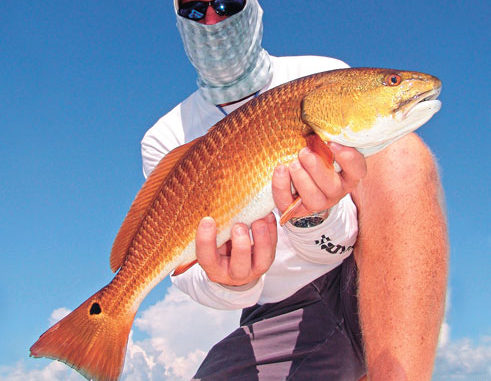
Fishing these North Inlet hot spots is well worth the boat ride.
North Inlet is a little off the beaten path — if water can be beaten — but most South Carolina fishermen know how to find it.
Although it’s technically an inlet, the name also refers to a sprawling area of salt marsh north of Winyah Bay. North Inlet is a good half-hour’s boat ride from ramps in the Georgetown area, but it’s apparently well worth the expense of fuel and time.
Tides and wind can push water in and out of the marshes and change its clarity in a jiffy, but the toughest thing about catching redfish, speckled trout and flounder in the marshes is reaching them; No Man’s Friend Creek and Jones Creek are the two main marsh thoroughfares, and getting in and out of them on low water can be a difficult job.
Richard Pate operates Carolina Guide Service with his brother, Jordan; he grew up on the waters around Charleston and Georgetown and loves the North Inlet area. He has some very specific ideas about the best ways to fish the marshes behind North Inlet.
“Most of the spots in North Inlet are better on a falling tide, especially if you’re fishing around oyster beds,” said Pate (843-814-7900). “Some of the mounds tend to show up in unexpected areas, like the middle of the creeks where most fishermen expect to find deep water.”
Pate and other captains who frequent the North Inlet marshes advise first-time fishermen to visit on the low end of the tide cycle and ease through the marsh, perhaps using a trolling motor, to learn where the obstructions to navigation are. Once you get past them, there’s no dearth of great fishing spots. Here are a few:
1 – No Man’s Friend Creek Oysters
N 33 18 774/W 79 11 616
Entering the marsh from Winyah Bay, move into No Man’s Friend Creek. After a big right-hand bend where Oyster Bay drains into the creek, look on the left-hand bank for series of oyster mounds, some of them marked by stakes.
“This is a double whammy. You have spotty oyster mounds near the mouth of a creek,” he said. “You want to come in to these oyster mounds from downwind.”
Pate likes to fish a soft-plastic bait on a jighead for reds around these oyster mounds.
2 – Mouth of Clambank Creek
N 33 19 928/W 79 11 288
Out from the mouth of Clambank Creek, a small tributary that drains the marsh around Goat Island, lies a deep hole that gives up a lot of flounder.
“This is really a good place in (No Man’s Friend) creek to troll for flounder,” Pate said. “I’d bounce a mud minnow along the bottom on a Carolina rig. It’s a sandy bottom.”
For fishermen preferring artificial baits, Pate said he’d fish a soft-plastic grub on a jighead. “You need to try and get as deep as you can. Just park your boat off the point where you can cast to the bank. You want to stay close to the bank on an outgoing tide.”
3 – Point Mouth Old Man Creek
N 33 20 118/W 79 10 711
Just before No Man’s Friend Creek turns into Town Creek about two-thirds of the way from Winyah Bay to North Inlet, Old Man Creek makes an appearance, draining some of the marsh behind Debidue Island.
The main point on the left-hand side of the creek mouth is well-defined, with a ledge that drops into the deeper part of the creek. It’s a great place to catch speckled trout
“The ledge comes out into No Man’s Friend Creek,” Pate said. “I’d fish it parallel, where you can hit both sides. I like to fish down the ledge on the left and across the point.
“This is definitely a trout spot, but you can catch flounder on it,” he said. “I like to fish it in the middle of the falling tide, around three hours before low tide. After you fish the point, you can go across the creek mouth and work that whole bank.
4 – Ditch Mouth Inshore of Debidue Creek
N 33 20 118/W 79 10 262
The mouth of a tiny ditch that drains the marsh west of the mouth of Debidue Creek is merely the starting point for fishing a good stretch of bank back toward the mouth of Old Man Creek.
“There’s a whole lot of bank to fish from the east edge of the mouth of Old Man Creek to here,” Pate said. “There are oysters around the mouth of the ditch up to the point (at the mouth of Debidue Creek), but you can work the entire stretch back to Old Man Creek.
“A lot of reds will be trying to get up in the grass on high water, so I like to fish a popping cork with a DOA shrimp or a grub.”
5 – Mouth of Sixty Bass Creek
N 33 19 654/W 79 10 103
A huge mud flat across the mouth of Sixty Bass Creek bars any entry into the curving waterway on the low end of the tide cycle, so Pate advises fishing it on higher water.
“The flat is across the creek to the left side, but it’s safe to fish on an incoming tide,” he said. “You can catch some big bull reds here that are coming in from the inlet; you can get out and wade and surf fish using cut mullet.”
If you can get back into the creek, Pate likes to fish for reds and speckled trout.
6 – Mouth of Wood Creek
N 33 18 680/W 79 10 272
Jones Creek is a main thoroughfare from North Inlet through the southeastern part of the marsh. Wood Creek enters from the beach side of the marsh about a mile from the mouth of Jones Creek.
“You want to troll for trout in this creek,” Pate said. “I just cruise in there and stay in the middle of the creek. It’s deep enough that you can troll 300 or 400 yards into the creek, maybe even a half-mile.
“When you catch a trout, you want to stop, go back and cast to the spot with a grub,” he said.
7 – Hole, Mouth Mud Creek
N 33 18 322/W 79 11 616
A mile or so farther up Jones Creek, a relatively narrow tributary, Mud Creek, enters from the western bank.
Pate said there’s a deep hole out from the mouth of the creek that holds speckled trout and flounder.
“You don’t want to fish back in the hole; you want to fish in front of the rip out in front of it,” he said. “You fish the tideline rip in front on an outgoing tide.
“I like to anchor up far off it enough to reach it with a good cast,” Pate said. “I like to fish it with live bait, a mud minnow, on a Carolina rig.”
8 – Mouth Haulover Creek
N 33 17 519/W79 11 717
Haulover Creek is a tiny waterway that connects Jones Creek with Mud Bay, a huge, shallow bay north of the shipping channel through Winyah Bay. Pate starts fishing the outer edge of the area before moving in to the oysters close to the mouth of the creek.
“This is a narrow marsh creek where trout is the game,” Pate said. “I’ll fish a grub on a jighead or a popping cork on an outgoing tide. They’ll be out there cracking on the bait that’s coming out of the marsh.”
Pate said a slough cuts through the extremely shallow waters of the bay, and it’s the ticket to reaching this spot from the big water.
“The last thing you want to do is go in there and spook ‘em,” Pate said. “I like to catch ‘em outside first.
9 – Haulover Creek Marsh Bank
N 33 17 743/W 19 11 917
Pate said a shallow, half-mile section of marsh bank between the mouth of Haulover and No Man’s Friend creeks is filled with oysters, with a white sign making the only drain in the grassline.
“I like to fish this place from two hours before to two hours after the high tide,” he said. “It can be shallow getting in; there are scattered oysters.
“You work the cut on the outgoing part of the tide and the grass banks on the incoming part of the tide for reds.”
10 – No Man’s Friend Point
N 33 17 919/W 79 12 219
If Pate is headed into North Inlet through No Man’s Friend Creek on the beginning of a falling tide, he’ll stop and fish this grass point on the west side of the creek mouth.
“You’ll catch trout here during the summer,” he said. “I’ll fish live shrimp under a cork.
“I like to fish the grass line that goes back in the creek with the current and when the current’s coming out.”

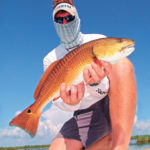
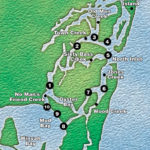
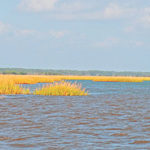
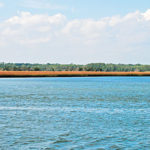
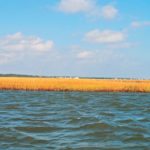
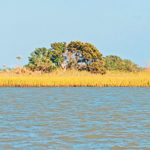
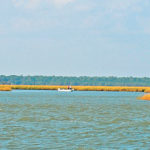
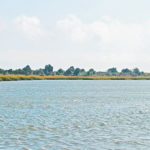
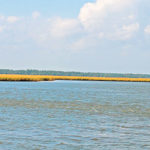
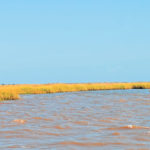
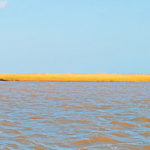
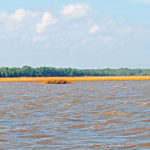



Be the first to comment